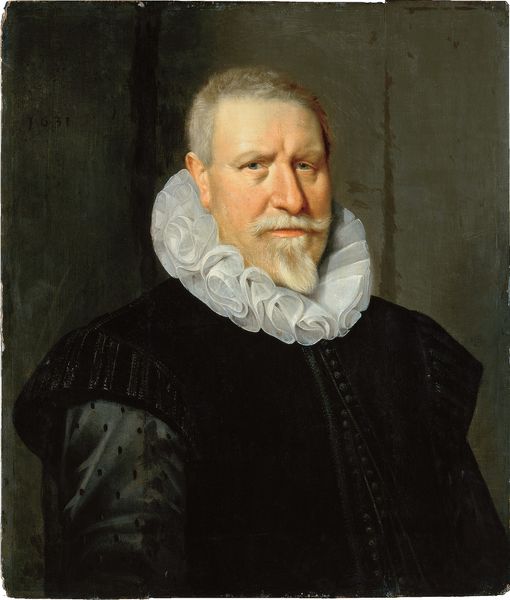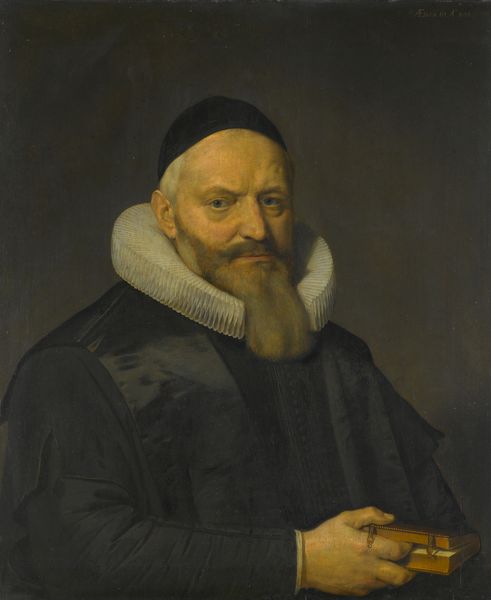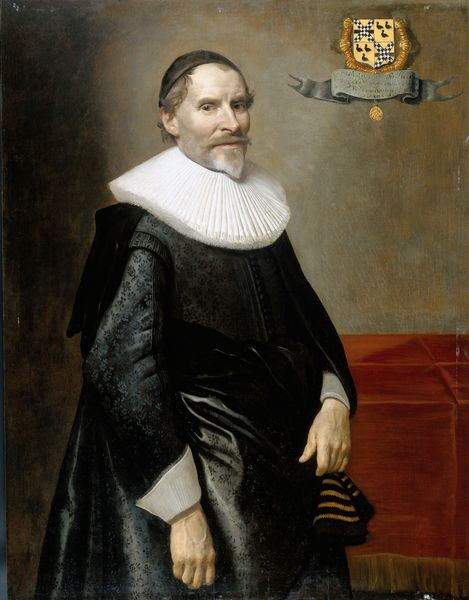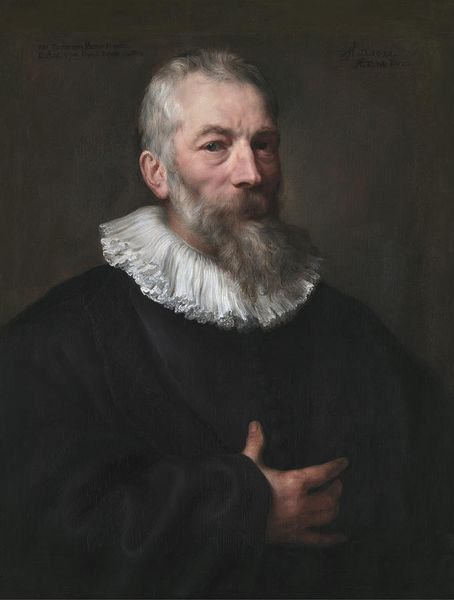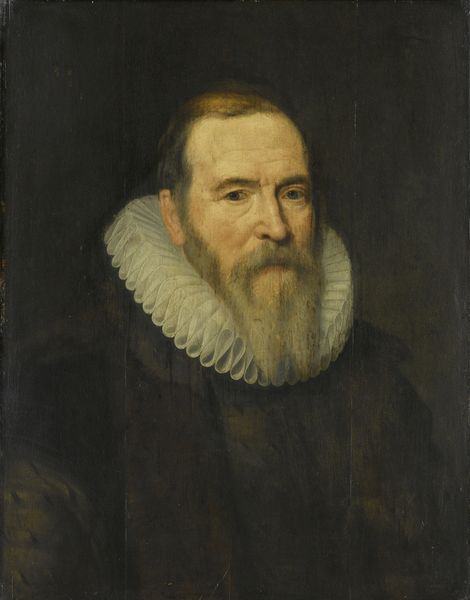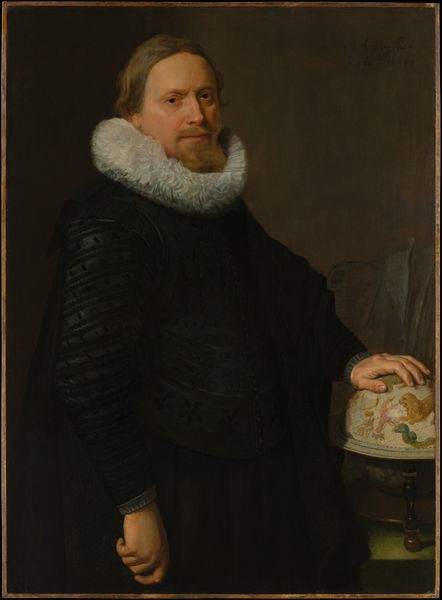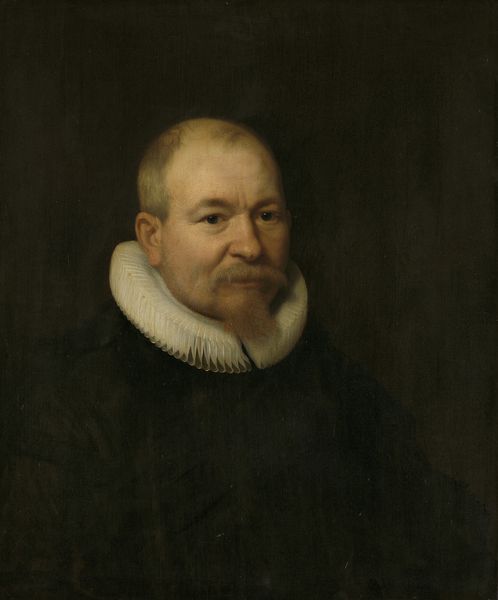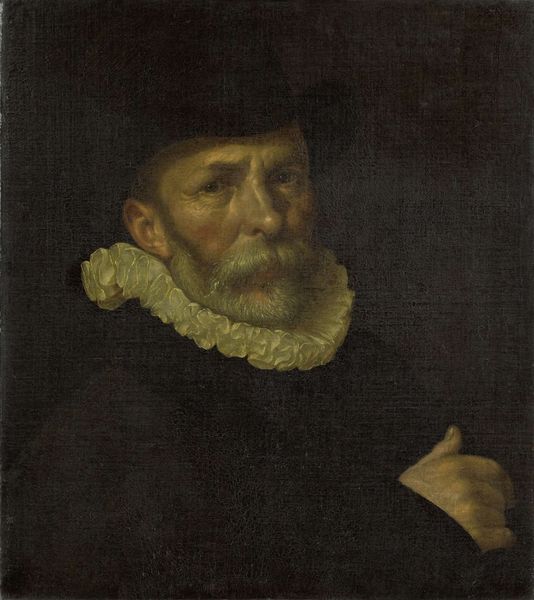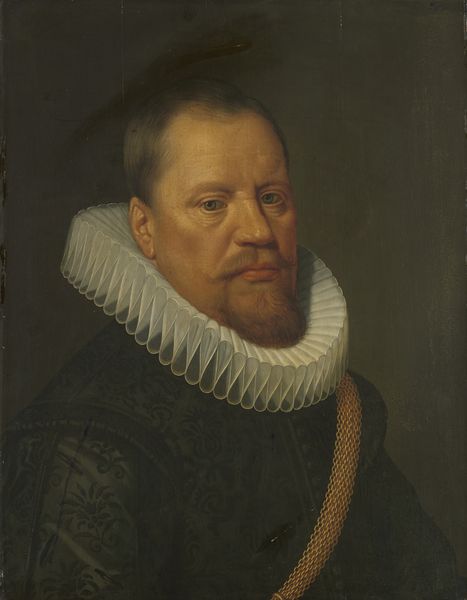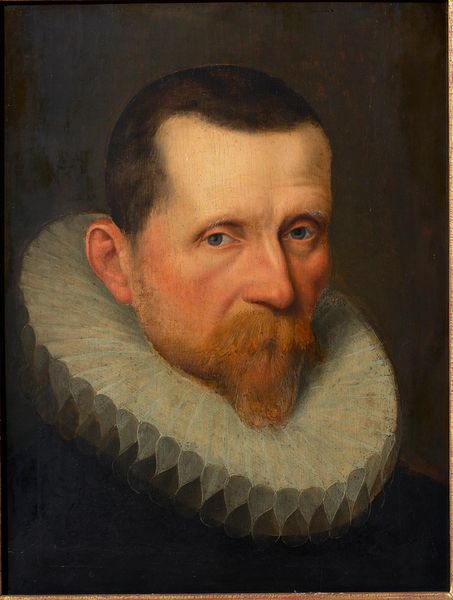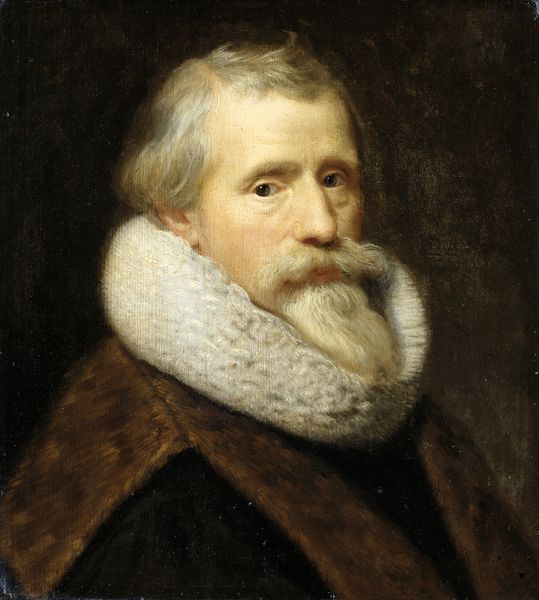
painting, oil-paint
#
portrait
#
baroque
#
portrait
#
painting
#
oil-paint
#
realism
Dimensions: height 78 cm, width 65 cm, depth 8.5 cm
Copyright: Rijks Museum: Open Domain
Editor: This is Johannes Verspronck’s 1641 oil painting, "Pieter Jacobsz Schout (1570-1645), Burgomaster of Haarlem." He has such a powerful presence, even across centuries. How do you interpret this work? Curator: Well, immediately I'm drawn to the ruff collar and heavy black cloak. It's fascinating how clothing acts as a visual shorthand. The ruff, while ostensibly a fashion statement, became synonymous with status, respectability, and adherence to social norms during that era. Doesn't it strike you as almost a barrier, creating distance? Editor: Yes, I see what you mean! The whiteness against his dark clothing really makes it pop. Curator: Absolutely! It also creates a sense of contained power. Black, consistently associated with authority, mystery, even mourning. Here, it tempers the ostentation that more colourful garments might suggest. And observe his hand: clasped, but not tense, suggesting self-assuredness, the capacity for control, not an active need to wield it. What does that say about leadership? Editor: It’s a fascinating contrast. So, you are seeing symbolism not just in objects but also in the body language. Curator: Precisely! Look at the face – the artist doesn't flatter; we see the lines of age, experience etched into his skin. Each wrinkle is a record. How might this realism shape our understanding of Burgomaster Schout? Editor: It shows a very human side of someone in authority. I suppose I always saw portraits as being purely celebratory and aspirational, but you have shown me all of these clues embedded in what he wears and how he stands. Curator: It’s a subtle dance, isn't it? A carefully constructed image designed to project a specific message. Considering how the Burgomaster wanted to be perceived tells us a great deal. Editor: This has really changed how I'll look at portraits going forward. There’s so much beneath the surface.
Comments
No comments
Be the first to comment and join the conversation on the ultimate creative platform.
